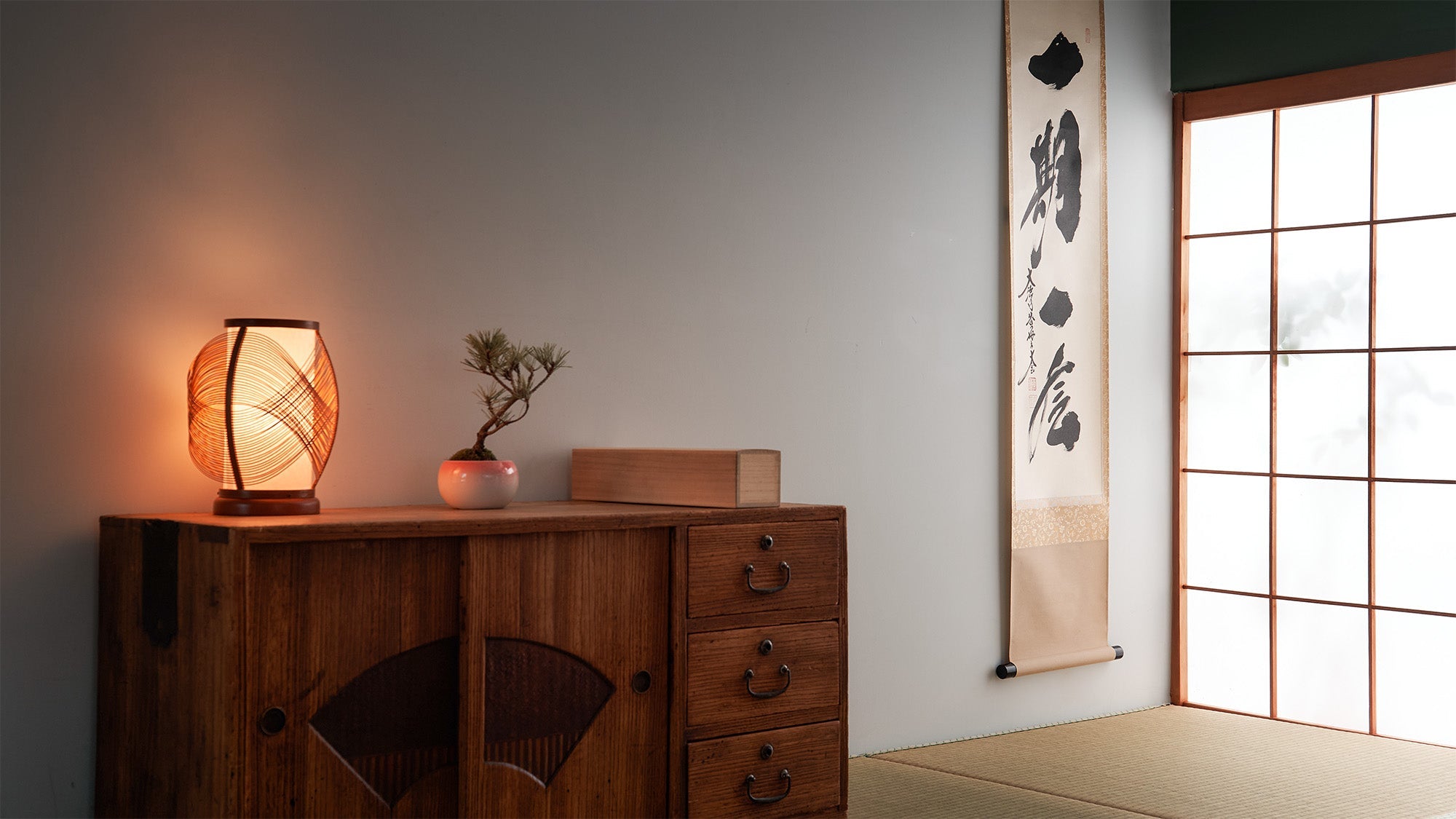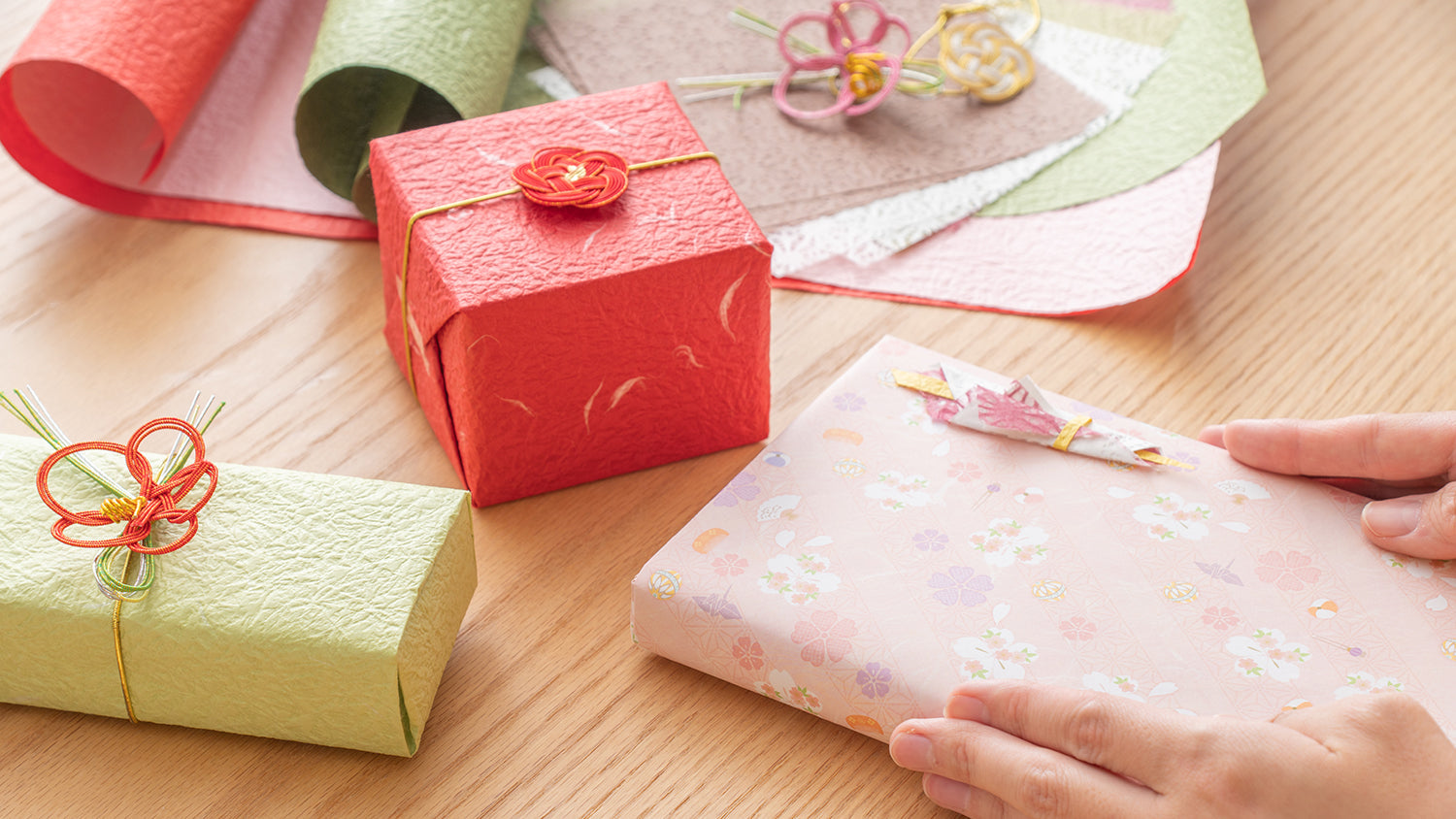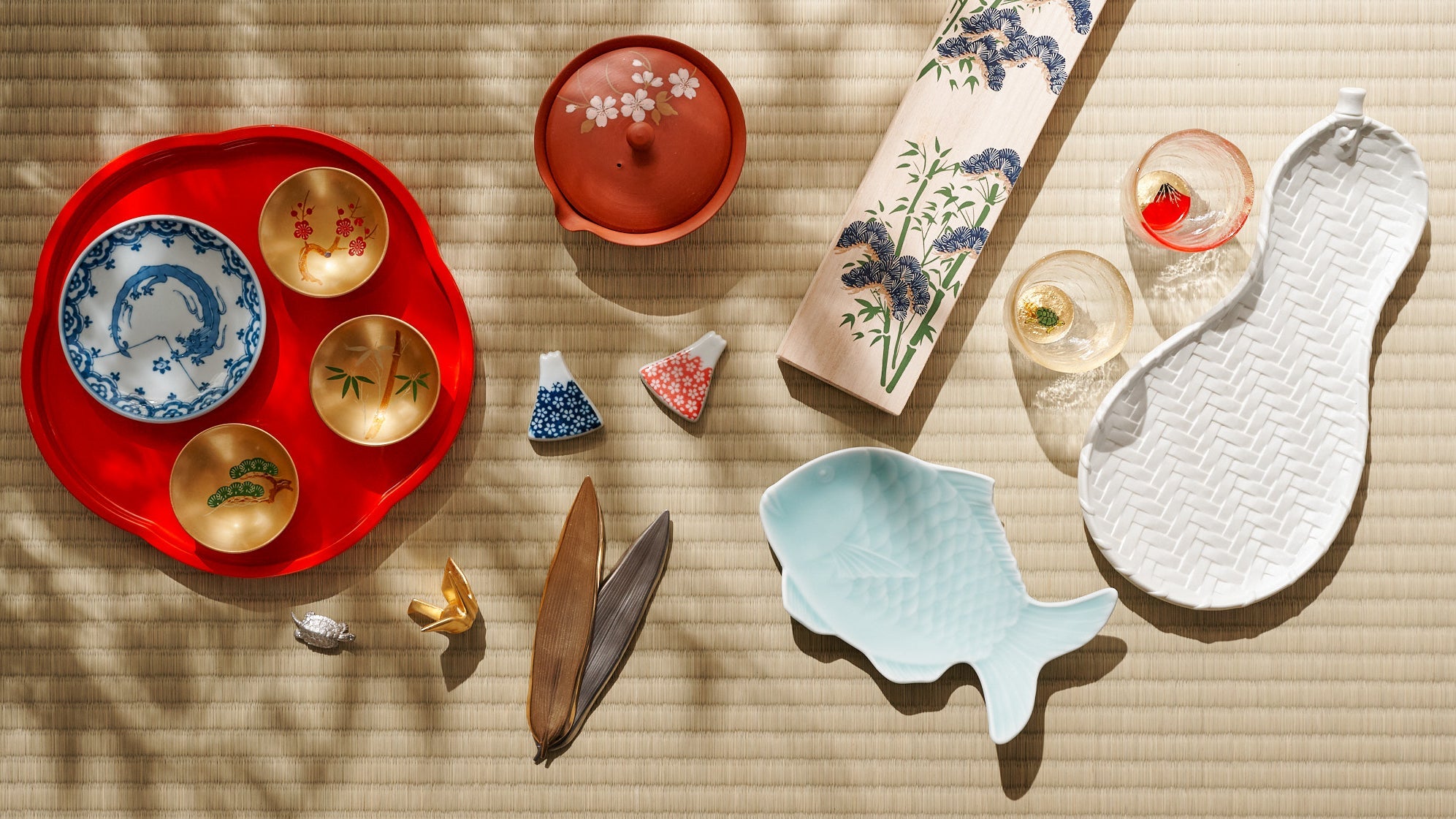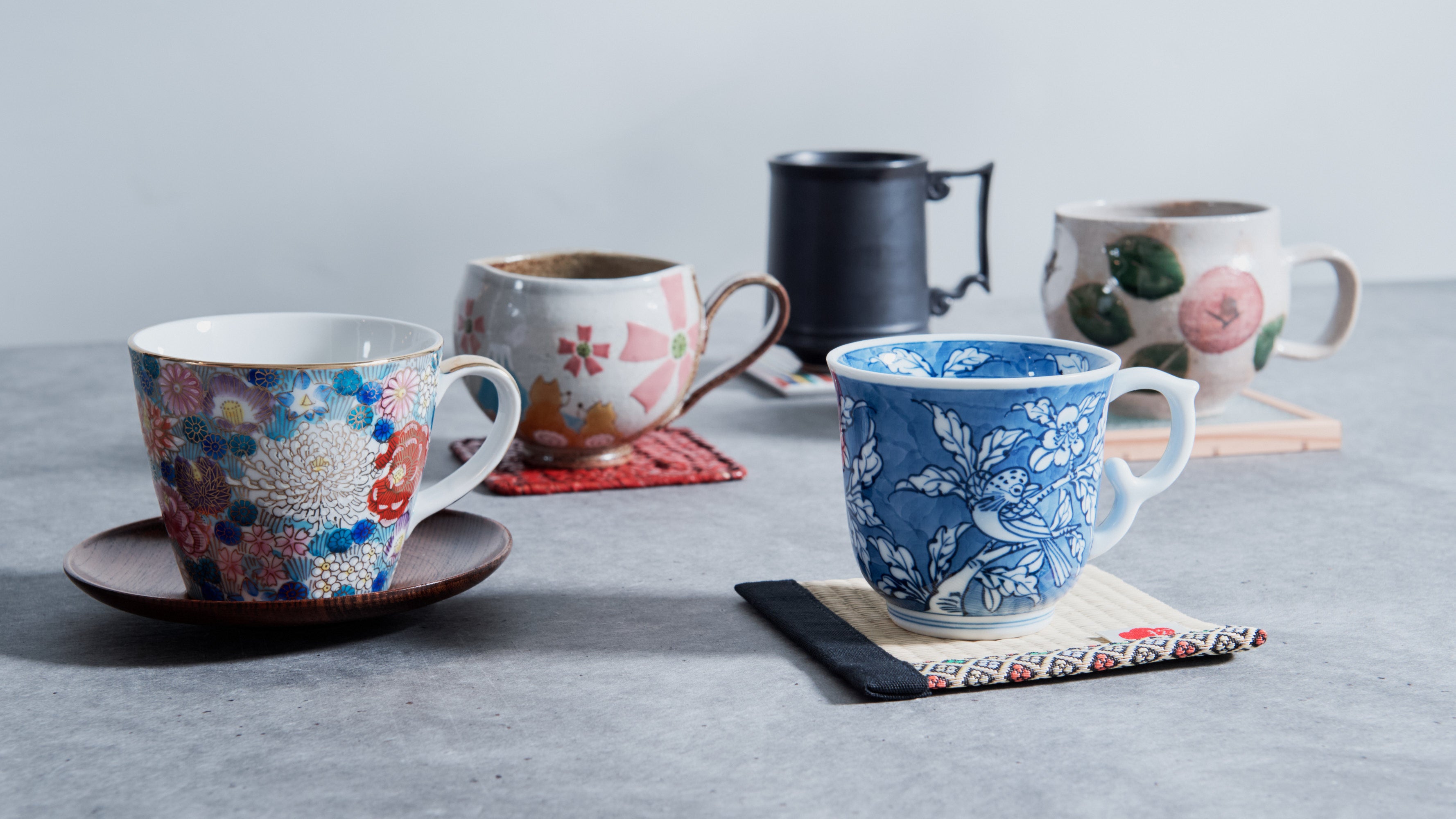
Guide to Kakejiku
Written by Team MUSUBI
A kakejiku is more than just a piece of traditional Japanese interior decor—it is a reflection of the seasons and the emotions of those who inhabit the space. A single hanging scroll on the wall has the power to transform a room’s atmosphere, evoking a sense of quiet contemplation. In the setting of a tea room, the kakejiku often becomes the focal point, carefully chosen by the host to express thoughtfulness and hospitality toward the guests.
In this article, we explore the history, types, display techniques, and proper care of kakejiku, offering insights into how this timeless art form continues to enrich modern living spaces.
Table of contents
What is a Kakejiku?

Kakejiku, a traditional form of Japanese wall art, is a decorative piece featuring a painting or calligraphy mounted on fabric or paper and intended for display in a tokonoma "alcove" or on a wall. Originally introduced from China, the hanging scroll has evolved uniquely within Japanese culture.
Name of Each Part of Hanging Scroll

We will walk you through each component of a traditional hanging scroll.
To begin with, a hanging scroll has a front side and a back side.
Front Side
Honshi "main work"
The honshi refers to the central painting or calligraphy. If the honshi is executed on paper, it is called a shihon; if on silk, it is known as kenpon.

Ichimonji "fabrics attached to above and below main work"
The ichimonji are the narrow, horizontal strips affixed above and below the honshi. They are the parts closest to the main work and significantly shape the overall impression of the mounting. They derive their name from the Chinese character for "one" (一), which their shape resembles.

Chumawashi "middle enclosure"
The chumawashi is the middle border that completely encircles both the honshi and the ichimonji. This crucial component significantly influences the overall appearance and is often simply called chu or chuberi.

Kami (ten) Shimo (chi)
The very top and bottom portions of a hanging scroll, known as kami "heaven" and shimo "earth," respectively, frame the chumawashi. Their function is to harmonize the scroll with its display setting.

Fuutai "decorative fabric strip"
The fuutai consists of two fabric strips that hang from the kami. According to one Chinese theory, these were originally added to ward off birds. Typically, the same fabric used for the ichimonji is employed for the fuutai.

Jikubou "scroll rod"
The jikubou is the central rod that facilitates rolling the scroll and also functions as a counterweight. Cedar wood is predominantly used, and some rods are filled with lead to enhance their weight.

Jikusaki "scroll rod ends"
The jikusaki are the decorative elements affixed to the left and right ends of the scroll rod. Typically crafted from ivory, they can also be made from lacquer, metal, or crystal, with the choice of material designed to complement the honshi.
Always roll up a hanging scroll by holding these designated parts. Gripping any other area may stress the honshi and other components, potentially reducing the scroll’s longevity.

Makio "wrapping cord"
The makio is the cord used to secure the hanging scroll when it is rolled up. When the scroll is on display, this cord is left to hang at the back.
Kakeo "hanging cord"
The string used for hanging and displaying the scroll.

Back Side
Gedai
The gedai is a slender strip of paper affixed along the upper-right edge of the silk mounting. It serves as the space for the title of the painting or calligraphy and the artist’s name.
Kamimakiginu
The kamimakiginu is a thin silk layer attached to the back or upper portion of the hanging scroll, designed to protect it from wear and environmental damage.
Jikutasuke
The jikutasuke are small paper pieces affixed to both ends of the scroll’s back, providing additional support.
The History of Kakejiku
The kakejiku was first brought to Japan from China in the 6th century as part of Buddhist art. Initially used for religious purposes in temples, it became popular among monks and the aristocracy. During the Kamakura period (1185–1333 CE), the introduction of ink painting (sumi-e) through Zen Buddhism elevated the artistic value of kakejiku, leading to its wider appreciation.
From the Muromachi period (1336–1573 CE) to the Azuchi-Momoyama period (1573–1600 CE), kakejiku became closely associated with chanoyu (tea ceremony), establishing itself as an essential element of tea room aesthetics. By the Edo period (1603–1868 CE), it had spread to the merchant and commoner classes, with subjects expanding to include ukiyo-e (woodblock prints) and haiku poetry.
Following the Meiji Restoration (1868), Western influences led to a decline in homes with tokonoma, changing the role of the kakejiku. However, it continues to be valued as a traditional Japanese art form, drawing interest from collectors and enthusiasts worldwide. Adapting to the changing times, kakejiku remains a reflection of Japanese aesthetics, offering a sense of tranquility that resonates even in modern life.
Types of Kakejiku
Kakejiku come in various types, distinguished by their purpose and artistic style.
Japanese Calligraphy Scrolls
Featuring calligraphic works, often expressing Zen philosophy or classical poetry.

Japanese paintings
Showcasing traditional Japanese paintings of landscapes, flowers, birds, and figures.
Shikigake (Seasonal Scrolls)
Designed to be changed according to the four seasons.
Chagake (Tea Ceremony Scrolls)
Specially used in tea rooms, often inscribed with Zen phrases reflecting the spirit of tea.

How to Handle and Store a Kakejiku
- Placement Considerations: Avoid direct sunlight and humidity to prevent deterioration.
- How to Roll: When storing, roll the scroll gently to preserve the fabric and paper.

-
Protection from Insects and Mold:
Since kakejiku are made of paper and silk, store them in a dry, well-ventilated space to prevent damage. Because kakejiku are delicate works of art, they require careful handling and proper storage. -
Use a Paulownia Wood Box:
Kiri "paulownia" wood absorbs excess moisture and repels insects, making it ideal for storing kakejiku.

-
Air Out Regularly:
Even when stored for long periods, unroll the scroll once or twice a year to allow ventilation and release trapped moisture. -
Prevent Curling and Folds:
Leaving a kakejiku rolled up for too long may cause folds or warping. Occasionally unroll it to help reset and maintain its shape.
Incorporating Kakejiku into Your Home Decor
A kakejiku is not limited to traditional Japanese rooms—it can also harmonize beautifully with modern interiors. When hung on a simple white wall, it stands out as a work of art, adding a sense of refined tranquility to the space. Framing a kakejiku gives it a contemporary feel, allowing it to blend seamlessly into living rooms or entryways.

Switching between different kakejiku to match the current season can create a dynamic atmosphere that reflects the natural flow of time. More than just decoration, kakejiku offer a meaningful way to incorporate Japanese tradition into modern living spaces. With proper care, it can be enjoyed as a timeless element of interior design.









Leave a comment
This site is protected by hCaptcha and the hCaptcha Privacy Policy and Terms of Service apply.